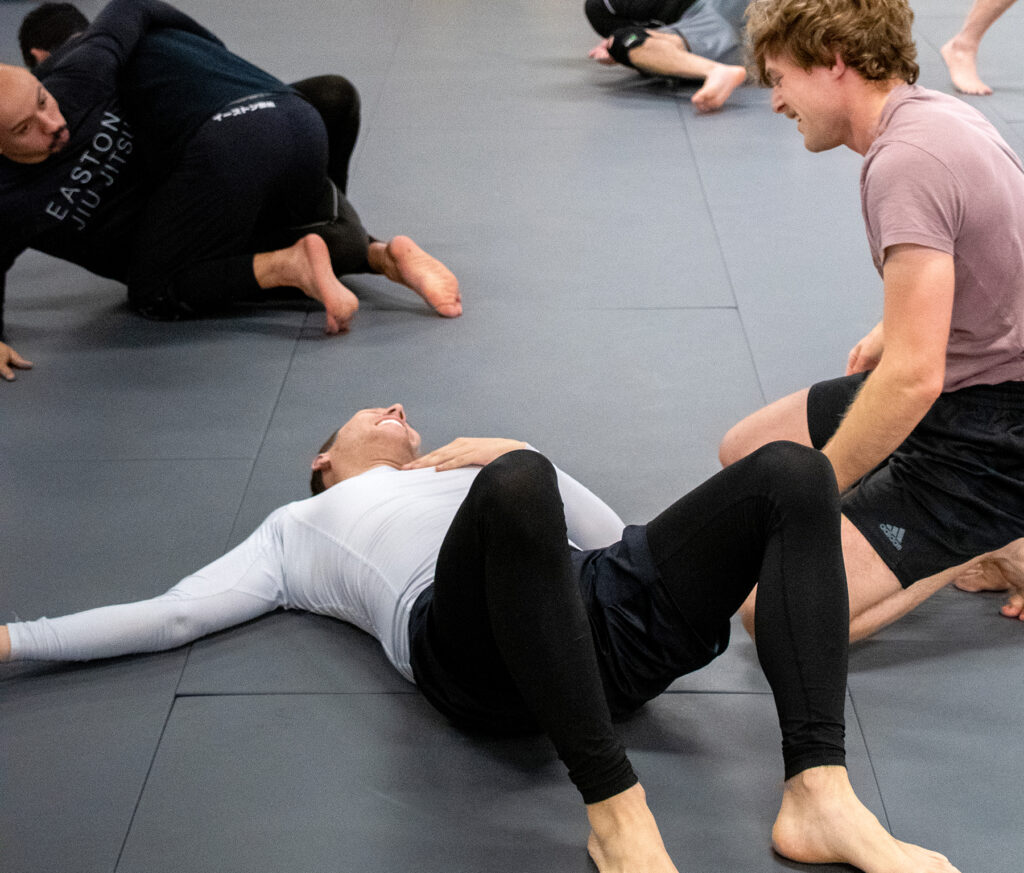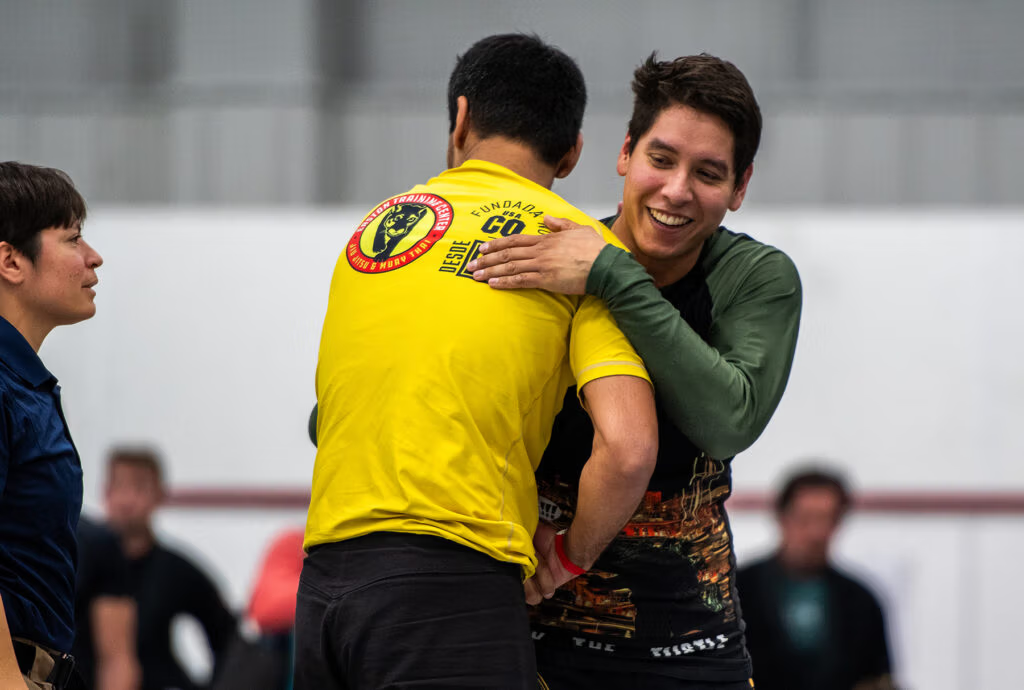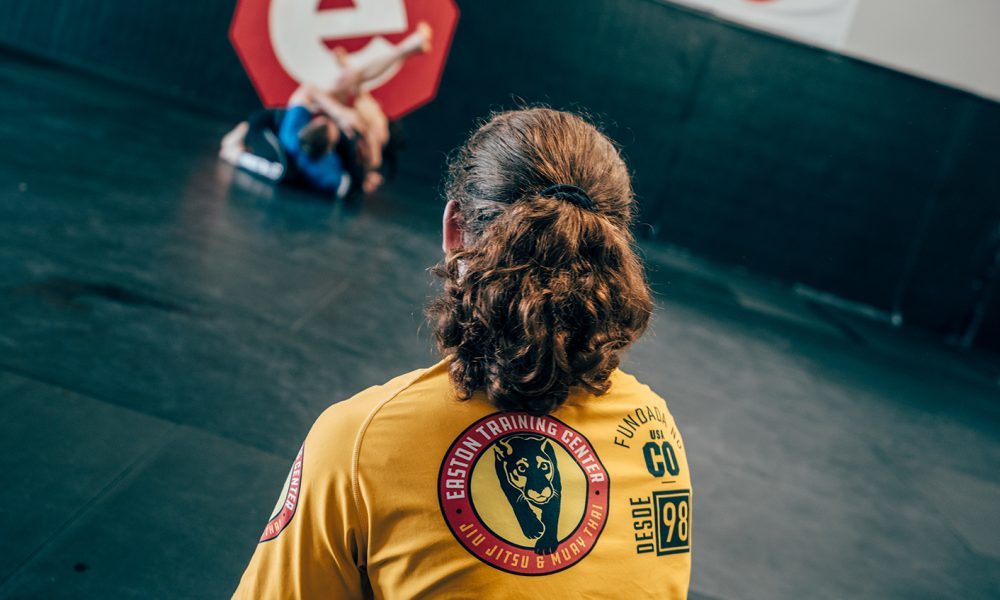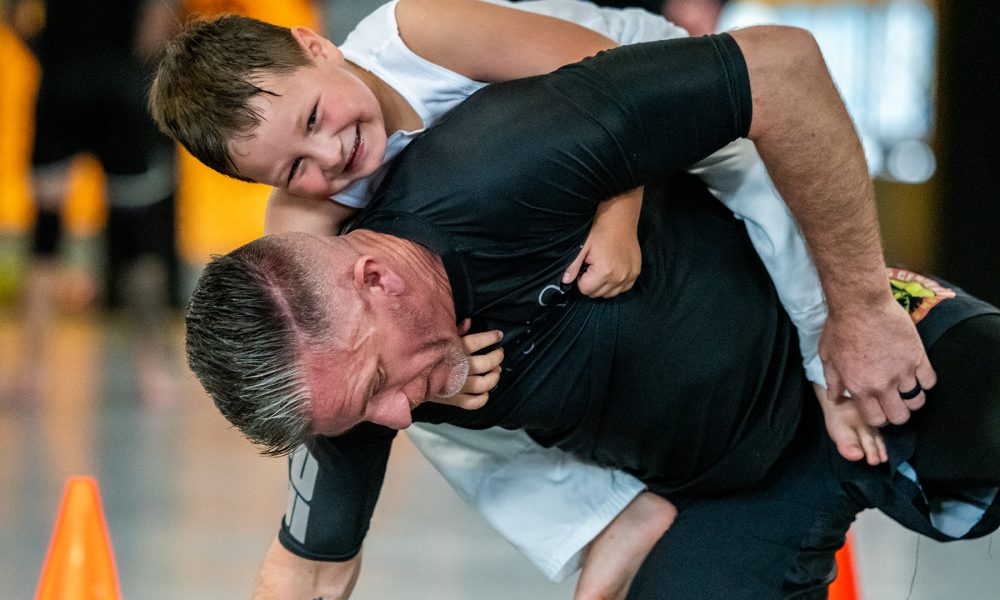One of the best things about Brazilian Jiu Jitsu lies in how it brings together people from all walks of life and myriad of shapes, sizes and abilities. In one of my adult classes for example, I have middle-aged men, teen boys and girls, moms and collegiate wrestlers — to name a few.
Some of these athletes want hard-fought rounds every time, others want to flow and enjoy solving the puzzle of Jiu Jitsu. All my students have different needs and goals, and as an instructor and a training partner, it’s my responsibility to show up as the best teammate I can. In addition to coaching adults, I also coach children, and this brings additional unique challenges, as some of my students are literally one fourth of my body weight.
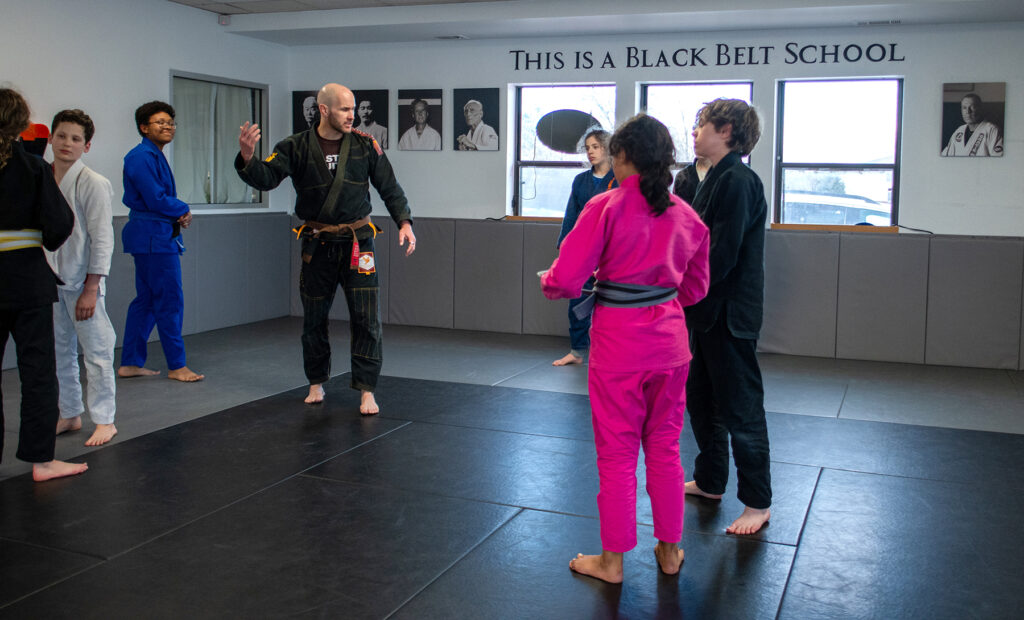
So how do we, as both a training partners and coaches, ensure that all of our students and partners get the best possible training they can get? Well, to start, we have to first look inward. Here are some questions we can ask ourselves:
Question Number 1: “What are your goals for your personal journey?”
You have to know what you want to get out of training or else your training won’t let you achieve your goals. For example, if you desire to be a world champion in the Gi, you should actively look for challenging rounds and instruction that aligns with your personal capabilities. Only training once per week in NoGi will never achieve your goals.
Conversely, if your primary reason for training Jiu Jitsu is for fun, but every time you roll you’re getting thrashed by bigger and more advanced opponents, eventually you may get frustrated and quit. To be clear, this does not mean that people who do Jiu Jitsu for fun should never have hard, punishing rounds. However, you want to have the self-awareness to know when you’re burning out and the self-confidence to find a balance between challenge and fun; this will help you advance while also keeping it fun. This may mean saying “no” to some hard rounds.
Question number 2: “Are you okay with losing?”
Whenever you learn new things, you will struggle. Anyone who has done even one Jiu Jitsu class can confirm this truth. However, for some reason, even though every honest person would agree with this concept, we still see a surprising number of students who never try new things in rounds. Instead, they favor techniques they already know well so as to “win” (or more accurately, not lose) and protect their egos. If you struggle with ego, you will really struggle with being a good partner in Jiu Jitsu. Do yourself and everyone around you a favor, and leave your ego at home!
[Easton Littleton’s GM, Nick Mavrick: Redefining What it Means to Be the Best]
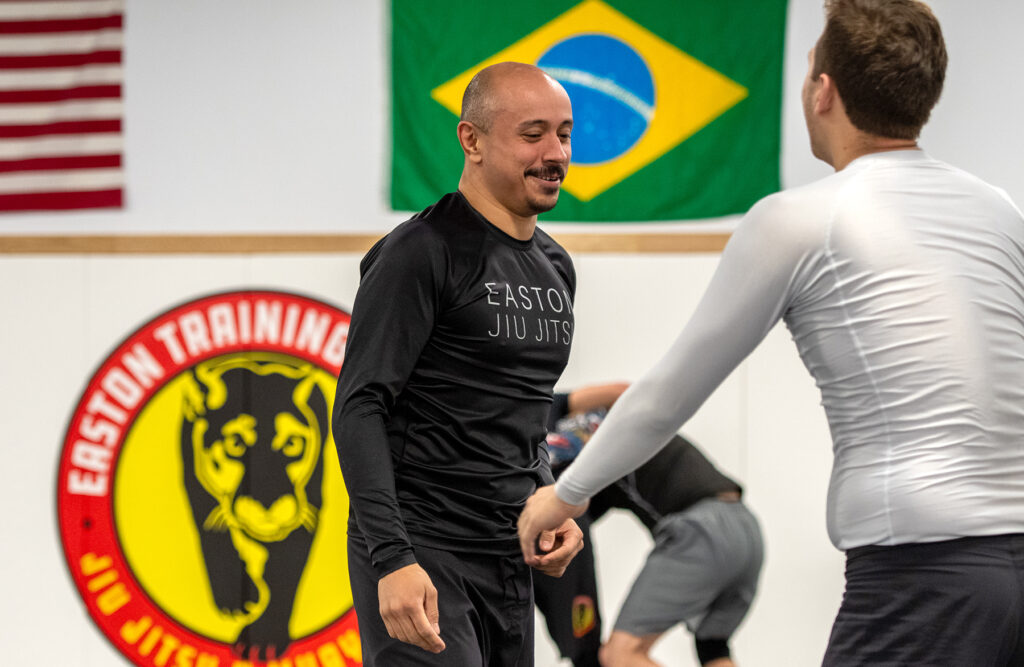
Types of resistance in BJJ
Once you have a clear understanding of your goals and have made peace with your ego, you’re ready to learn how to tailor your resistance to your various training partners! As I mentioned, BJJ brings together people of ALL shapes and sizes with all different goals. So, let’s dive into the different types of resistance in BJJ.
Light Resistance
Light resistance means that you are moving at a relatively slow pace and applying only minimal pressure against your partner. Pressure in this sense means not just bodyweight applied, but also how hard you try to stop your partner from accomplishing their goal. This level of resistance is possibly the hardest to master, due partly to ego, but also largely due to the subjective nature of the terms “slow” and “pressure.” Let’s try to define these terms in practical ways.
Slow in this context means that your speed of movement should only go as fast as it needs to for the goal at hand with 100 percent success. For example: take drilling a new technique with a training partner. That technique likely requires you to respond in certain ways, and you should only respond as fast as your partner can keep up.
Drilling allows your partner to build muscle memory, so it’s important that they get as many PERFECT reps as they can. If you are drilling a technique with a partner who knows it well, then you can increase your speed to still allow for 100 percent success, but also help your partner improve their speed.
[Finding Balance: Technique Over Insensity in Martial Arts]

Another time to highly regulate your speed is when rolling with someone much smaller or less experienced than you — for safety purposes as well as training. If a 225 pound man finds himself in a round with a 145 pound woman, regulation of speed becomes crucial to prevent accidental falls. Unintentionally flopping on someone of the same size and strength is never good, but with someone much smaller, it could make them no longer able to train.
The same speed consideration applies to experience, particularly when talking about white belts as training partners. The less experienced your partner, the more likely they are to respond in ways that are not only incorrect, but dangerous if you’re moving too quickly. Try to moderate your speed to account for the unpredictable and prevent injury to yourself or your partner.
Pressure refers to the amount of physical weight you apply to your partners, and how hard you make it for them to accomplish something. Weight relates to how hard you “smash” your partner, how you position your body weight to pin your partner or how you focus pressure on specific pain points. Using pressure as a blocking force can also mean how you frame or use grips or entanglements to stop your partners from moving.
So, how do you apply “light” pressure? The same general principle that governs your speed should also guide your use of pressure. Drilling a new technique with someone? If you and your partner are practicing a pass, you should only frame or off-balance them hard enough so they can execute the steps of the technique successfully. (Obviously, if they are making large mistakes, you should not allow them to be successful as that will build bad habits in your partner.)
[Creating Space in the Face of Pressure]
What about weight? Are you applying so much weight to your partner that they can’t execute the technique you need to drill? Then you are applying too much. Back off to allow for success while learning new skills. What about smaller partners and, particularly, children? During drilling, you should be applying very little weight to your partner. Again, only apply so much weight that your partner can practice effectively while still achieving 100 percent success. (And stay weary of the complete opposite; nobody can do Jiu Jitsu on a limp noodle.)
As it relates to children, my personal rule (as a 205-ish pound man) is to place no pressure at all at any time, unless I am rolling with one of my older, more advanced students. You may not agree with me on my “no pressure at any time” rule, but you should agree that safety of children is paramount. Should you decide to apply some pressure during rolling with children, it should NEVER be more than needed to provide realistic resistance to the child.
Now that we have clearly defined what we mean by speed and pressure, explored the “light” application of those forces in appropriate context and tried to remove some of the subjectivity around these terms, we can talk about other levels of resistance.
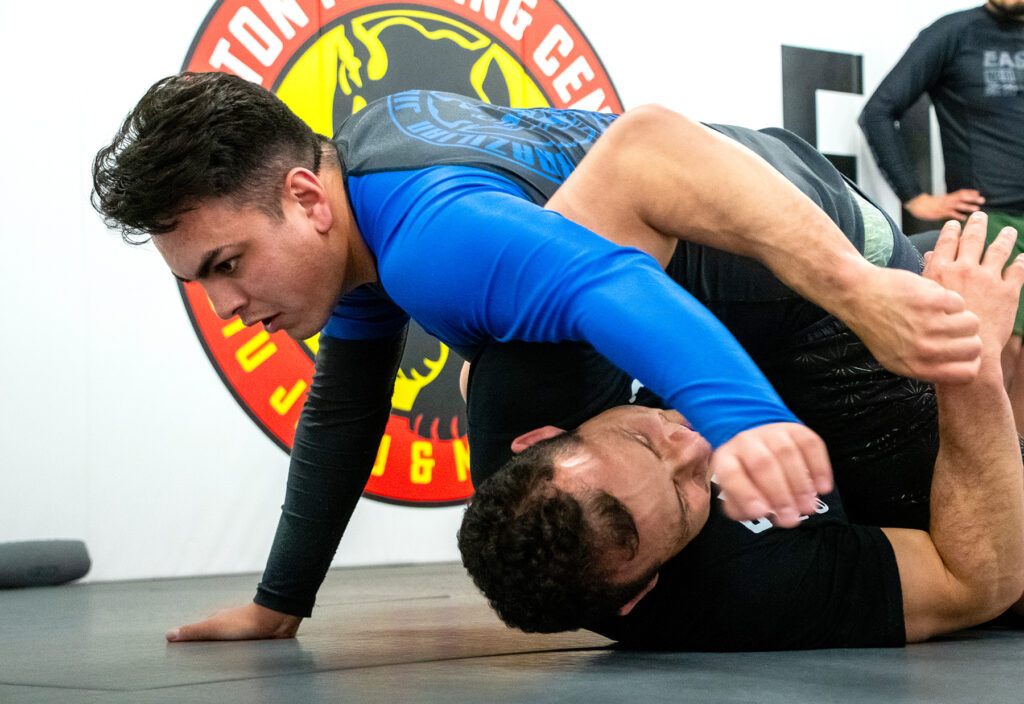
Moderate Resistance
As opposed to light resistance, just enough so that your partner can learn with 100 percent success, moderate resistance means using just enough resistance to “win.” This could mean in positional sparring (a.k.a “up-down-out” or “sweep-pass-submit” exercises) where you and your partner start from a pre-determined position, and after certain conditions have been met, you train with enough resistance to achieve the set goal. This could also mean barely resisting if you are much more advanced than your partner. Or it could mean giving maximum, safe effort to escape from a bad position before you get submitted.
What about moderate pressure? You can look again to your partner for the answer. Are they much smaller than you? For myself, when rolling with a much smaller partner, I attempt to estimate how much pressure someone their own size would apply to them and try to match that. When in doubt, I apply less pressure.
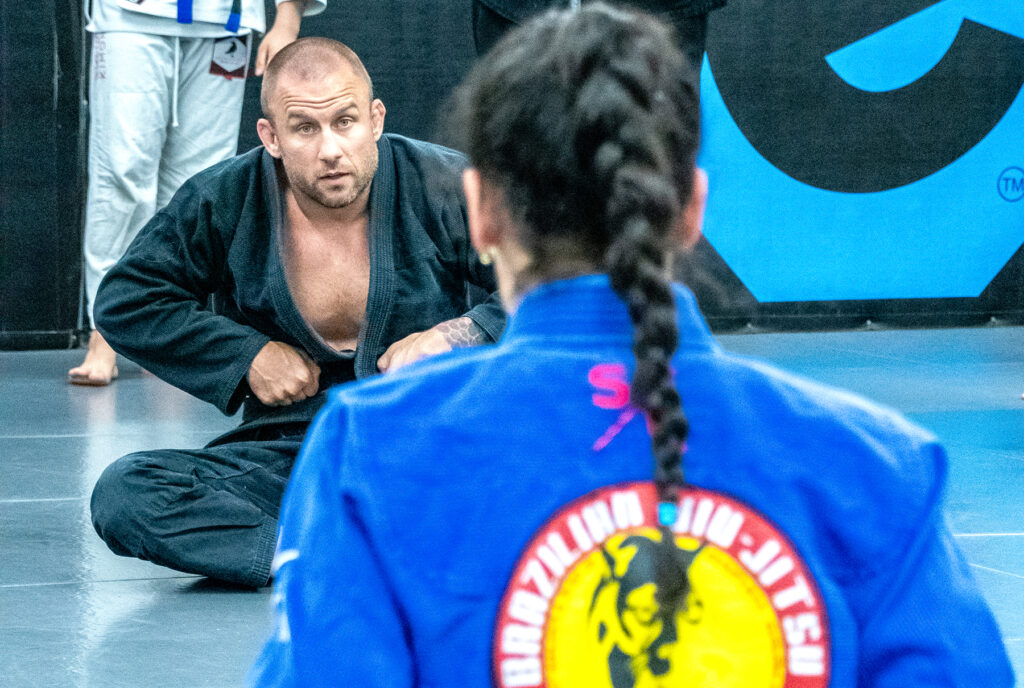
If you adopt this strategy as I have, you WILL LOSE rounds or positional sparring that you otherwise could have won by applying more pressure. If you find this difficult, then I suggest you find different sparring partners or self-reflect to make sure this isn’t your ego controlling you. You don’t have to adopt my strategy, but whatever strategy you choose, the goal during moderate resistance should be to win with as little pressure as possible.
For larger men training with female partners, unless your female partner has specifically asked you to use pressure or the technique requires it, try to apply as little pressure as possible (while still giving them plenty to work with.) Plenty of women who train at Easton are far tougher than me, but for my own conscience’s sake, I never attempt to submit a female training partner with pressure, suffocation or pain.
You need to find your own values on this topic, and I encourage you to be curious and ask your female training partners what they think about this before making a decision about how you plan to interact with them during training. While too much pressure doesn’t make for good work, too little may make them feeldismissed or patronized.
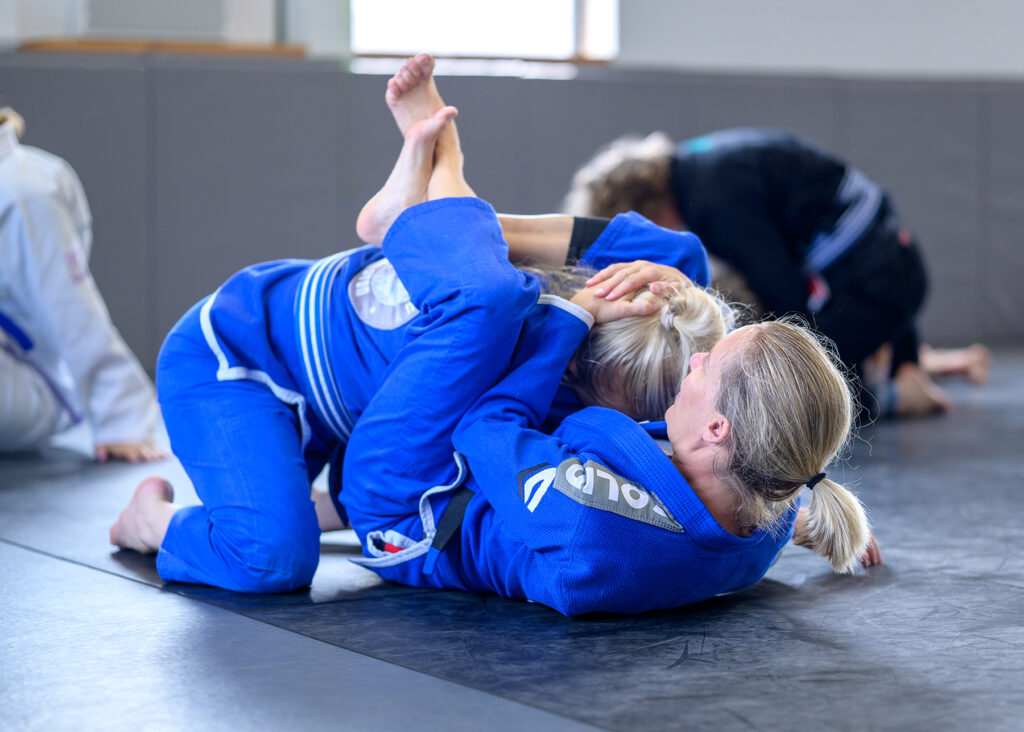
Finally, let’s explore the easiest to define: full resistance.
Full Resistance
Full resistance refers to competition or self-defense level intensity, plain and simple. It means applying as much resistance as possible to dominate your opponent or survive an assault by any means necessary.
You may have noticed, I use the word “opponent” instead of “partner” here — intentionally. You should rarely use this level of resistance in the academy and only with partners who are VERY CLEAR — and in agreement — that you will be fighting this hard. It’s also very important that your partner understands you might attempt to submit them with pressure, pain or suffocation, and that they are ok with you doing so.
This level of resistance can be dangerous and not sustainable for long periods of time. If you notice that you hurt others or find yourself getting injured more and more frequently, you are likely training with too much resistance. Work with your coach or professor on a plan to scale your training in a way that keeps you on the mats while still helping you achieve your goals – no matter what they are.
Another personal rule for myself on full resistance: I will never ask someone significantly smaller (in my case less than 175 lbs or so) or someone with a much lower skillset to do a round of this intensity level with me. Training this hard means I’m preparing for a competition or testing myself in some way. It makes no sense for me to do that with partners who can’t challenge me technically or physically.
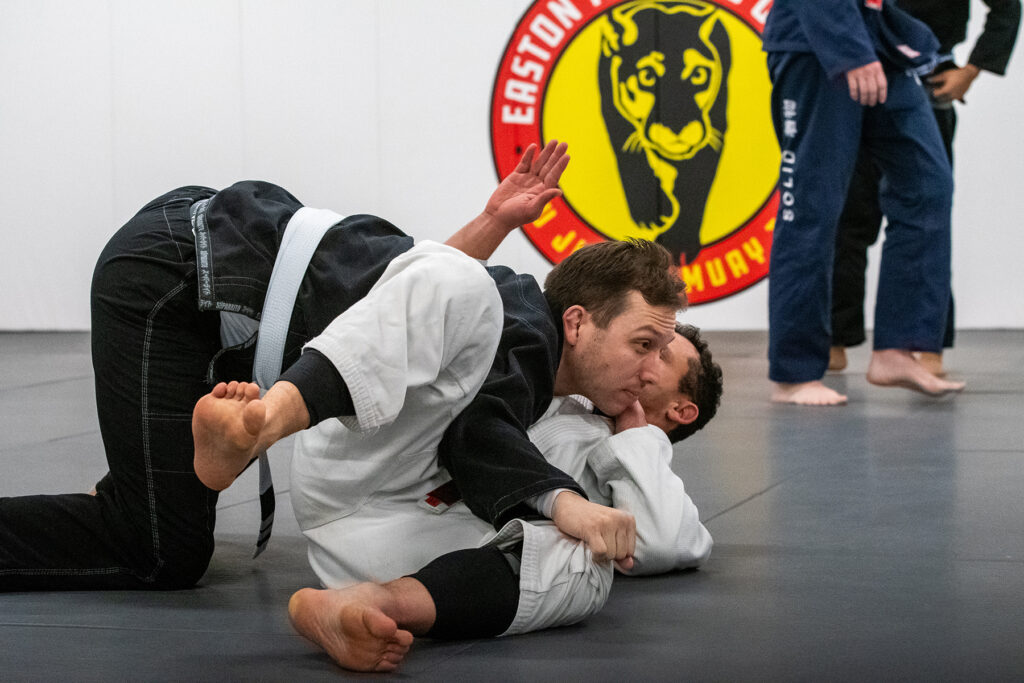
Other important factors
Now that we’ve discussed the different resistance levels and their appropriate uses, here are a few additional rules of thumb to keep in mind:
- You have the right to refuse to train with anyone who makes you feel uncomfortable or afraid. This might be someone much larger than you who you don’t trust to protect you during rounds, or someone much more advanced who likes to bully less advanced partners by always dominating them in rounds. If you have special considerations that may prevent you from training with certain people in your academy beyond the considerations listed here, talk with your professor and come up with a plan on how you can continue to train effectively.
- You have the right to protect yourself at all times. If you start a round using moderate resistance but very quickly find yourself in what feels like a fight for your life, you should obviously use whatever resistance is necessary to protect yourself. You can also always verbally stop the round and ask your partner to please lower their intensity level.
- You have the responsibility to protect your partner at all times. This means “respecting the tap” but also considering your partner’s experience level. Lower belts and white belts in particular will often react in unpredictable ways because they don’t know how to react correctly yet – especially if getting submitted. When training with white belts, I generally (but not always) stick to avoiding techniques that I know my partner has never seen before. I also don’t attempt to apply a submission unless I have secured good control of their body first, to prevent them from hurting themselves.
- Respect your partner’s physical limitations or injuries at all times. This really should not need further explanation. If you would intentionally attack an injured part of your training partner’s body, you may not be a good fit for the Easton community.
Whether you’re a coach or a student, keeping safety front of mind and respecting peoples’ limitations stands paramount in providing effective training and protecting the community culture of Brazilian Jiu Jitsu. See you on the mats!
